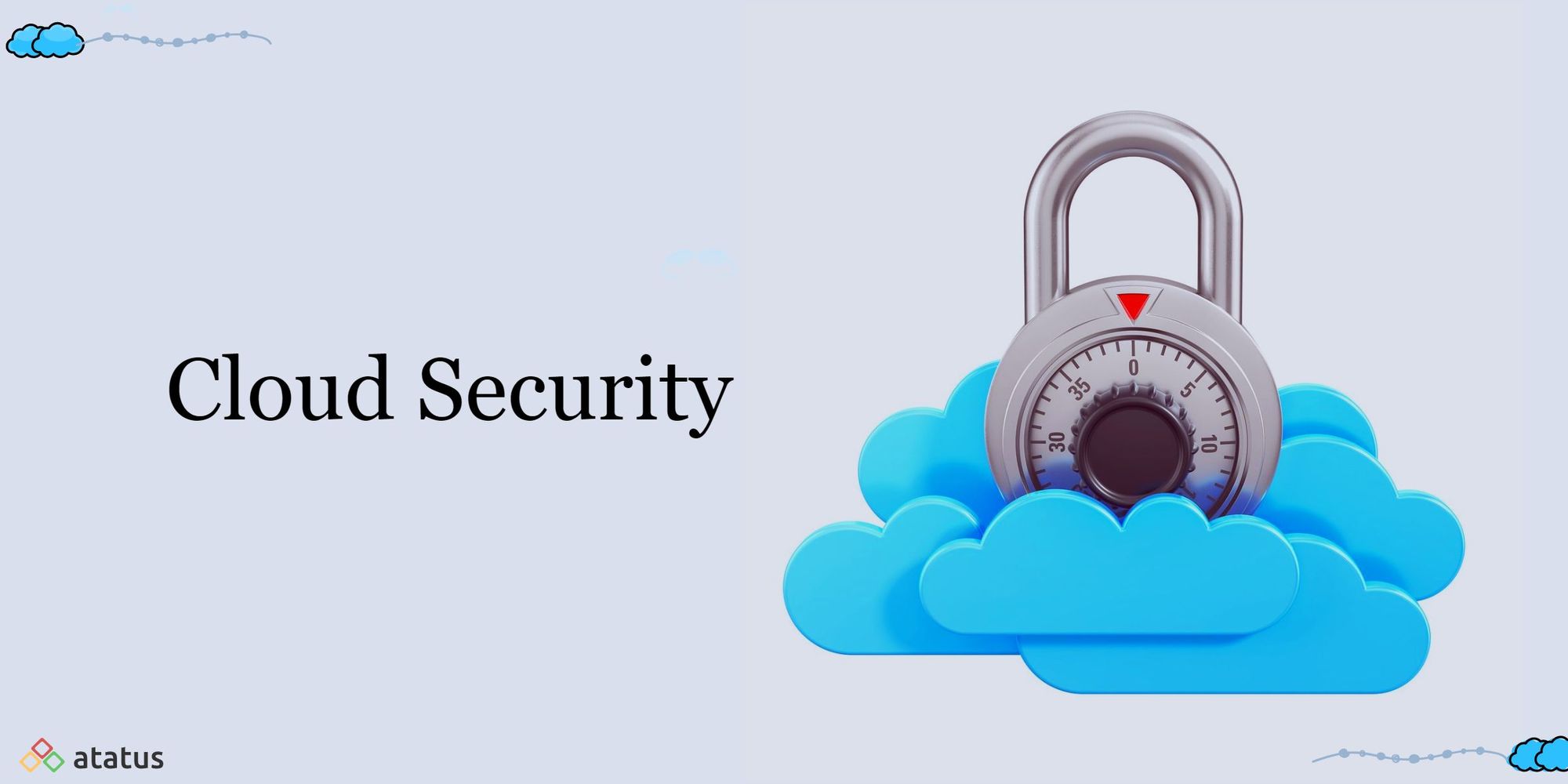Advertisements
Cloud security is a set of policies and technologies that are meant to address both external and internal threats to enterprise security. As they implement their digital transformation strategy and include cloud-based tools and services into their infrastructure, businesses require cloud security.
In recent years, the terms digital transformation and cloud migration have become commonplace in business settings. While both expressions can represent different things to different companies, they all have one thing in common: the need for change.
While more current technologies enable firms to extend capabilities outside the limits of on-premise infrastructure, new issues arise when balancing productivity levels and security. If not done safely, shifting to cloud-based settings might have a number of consequences.
To strike the correct balance, modern-day organizations must understand how to benefit from the utilization of linked cloud technologies while implementing the finest cloud security policies.
What exactly is cloud computing?
The term “cloud” or “cloud computing” refers to the process of accessing resources, software, and databases over the Internet and outside of the constraints of local hardware. This technology allows enterprises to scale their operations more easily by transferring a piece, or the majority, of infrastructure administration to third-party hosting providers.
The most prevalent and commonly used cloud computing services are:
- IaaS (Infrastructure-as-a-Service)
A hybrid strategy in which businesses handle some of their data and applications on-premise. while outsourcing server, hardware, networking, virtualization, and storage management to cloud providers
Advertisements
- PaaS (Platform-as-a-Service)
Allows businesses to speed application development and delivery by providing a custom application framework that controls operating systems, software upgrades, storage, and supporting infrastructure in the cloud.
- SaaS (Software-as-a-Service)
Online cloud-based software is often provided via subscription. Third-party suppliers handle all potential technical concerns, such as data, middleware, servers, and storage, while reducing IT resource costs and expediting maintenance and support tasks.
What is the significance of cloud security?
Modern organizations are increasingly moving to cloud-based systems and IaaS, PaaS, or SaaS computing models. The dynamic nature of infrastructure management, particularly when increasing applications and services, can result in a number of complications. companies, when their departments are suitably resourced These as-a-service models, enable firms to outsource various time-consuming IT-related duties.
Understanding the security standards for keeping data safe has grown crucial as businesses continue to shift to the cloud. While third-party cloud computing companies may administer this infrastructure, the responsibility for data asset security and accountability does not always move.
Most cloud providers implement the best security measures by default and actively defend the integrity of their systems. When it comes to protecting data, applications, and workloads in the cloud, enterprises must make their own decisions. As the digital ecosystem evolves, security risks have become more sophisticated.
Because of an organization’s total lack of visibility in data access and movement, these attacks explicitly target cloud computing providers. Organizations might face considerable governance and compliance risks when handling client information, regardless of where it is housed, if they do not actively improve their cloud security.
Regardless of the size of your business, cloud security should be a primary priority. Cloud infrastructure serves practically every facet of modern computing across all businesses and verticals. However, cloud migration adoption requires adequate defenses to defend against contemporary cyberattacks.
Cloud authentication mechanisms and best practices are essential for maintaining business continuity whether your firm works in a public, private, or hybrid cloud environment.
What are some of the problems associated with cloud security?
1. Inadequate visibility
Because many cloud services are accessed outside of corporate networks and through third parties, it’s easy to lose track of how and by whom your data is being viewed.
2. Multitenancy
Because public cloud environments house various client infrastructures under the same roof, hostile attackers may infiltrate your hosted services as collateral damage when targeting other enterprises.
3. Access control and shadow IT
While companies may be able to properly monitor and restrict access points across on-premises systems, implementing the same degree of restrictions in cloud environments can be difficult. This might be hazardous for firms that do not implement BYOD regulations and enable unfiltered access to cloud services from any device.
4. Compliance
Regulatory compliance management is frequently a cause of uncertainty for organizations deploying public or hybrid clouds. Overall responsibility for data privacy and security remains with the organization, and relying too much on third-party solutions to manage this component might result in costly compliance difficulties.
5. Misconfigurations
Misconfigured assets accounted for 86% of breached records in 2019, highlighting the importance of the unintended insider in cloud computing systems. Misconfigurations might include things like keeping default administrative passwords in place or failing to create suitable privacy settings.
What kinds of cloud security solutions are there?
- Management of identity and access (IAM)
Enterprises can utilize identity and access management (IAM) technologies and services to install policy-driven enforcement methods for all users attempting to access both on-premises and cloud-based services. The primary functionality. The goal of IAM is to create digital identities for all users so that they can be actively monitored and limited as needed during all data transactions.
- Data Loss Prevention (DLP)
DLP services provide a set of tools and services designed to safeguard the security of regulated cloud data. DLP systems secure all stored data, whether at rest or in motion, by combining remediation warnings, data encryption, and other preventative measures.
- Security information and event management (SIEM)
Security information and event management (SIEM) is a comprehensive security orchestration solution for cloud-based settings that automates threat monitoring, detection, and response. SIEM technology enables IT teams to successfully manage log data across many platforms and digital assets by utilizing artificial intelligence (AI)-driven solutions.
- Disaster recovery and business continuity
Data breaches and disruptive disruptions can occur regardless of the precautionary measures that enterprises have in place for their on-premise and cloud-based infrastructures. Enterprises must be able to respond swiftly to newly identified vulnerabilities or large system failures. Disaster recovery solutions are a must-have in cloud security because they provide enterprises with the tools, services, and standards needed to fast data recovery and restart normal company operations.
What approach should you take to cloud security?
Every organization’s approach to cloud security is unique and can be influenced by a variety of factors. However, the National Institute of Standards and Technology (NIST) has developed a list of best practices that can be used to construct a secure environment.
The NIST has developed procedures for every company to self-assess their security readiness and implement suitable preventative and recovery security measures on their systems. These principles are based on the five pillars of a cybersecurity architecture established by the NIST: identity, protect, detect, respond, and recover.
Cloud security posture management is another new cloud security solution that aids in the implementation of NIST’s cybersecurity architecture (CSPM). Misconfigurations are a typical issue in many cloud settings, and CSPM solutions are meant to remedy them.
Misconfigured cloud infrastructures by organizations or even cloud providers can lead to a number of vulnerabilities that dramatically enhance an organization’s attack surface. CSPM addresses these concerns by assisting in the organization and deployment of the fundamental components of cloud security.
Identity and access management are examples of this (IAM), as Management of regulatory compliance, network monitoring, threat management, risk reduction, and digital asset management






